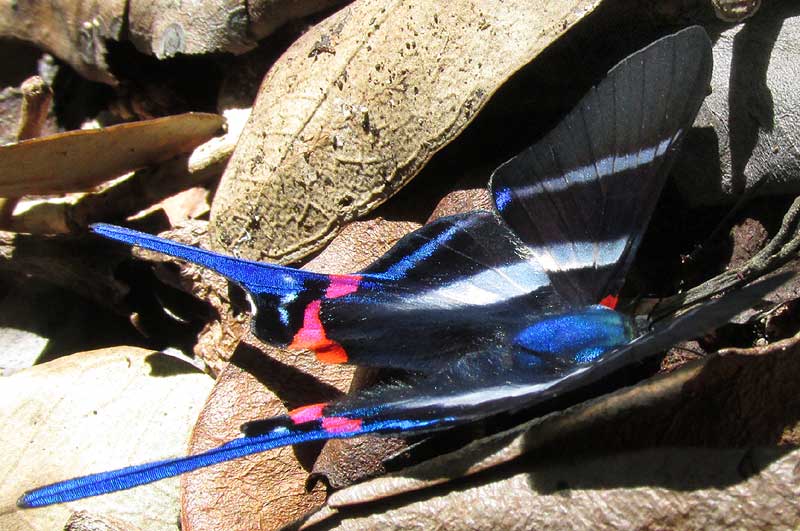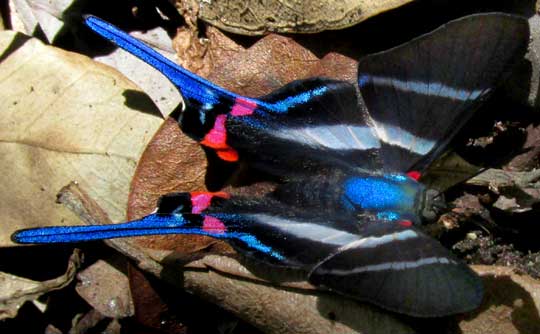Excerpts from Jim Conrad's
Naturalist Newsletter

from the November 16, 2014 Newsletter issued from Río Lagartos, on the Yucatan Peninsula's northern coast (~N21.60°, ~W88.16°), Yucatán state, MÉXICO
LONG-TAILED METALMARK
Above you can see one of the prettiest butterflies I've run across in a long time. Below, you can see another view from the top better showing how like an opening and closing mouth the wings might look as they slowly oscillate between near-horizontal to vertical position:

The thick body cues us that this is a skipper-type butterfly. Doing an image search on Mexican skippers, soon an image of this gaudy species jumps from the screen, and the name it bears is Long-tailed Metalmark, RHETUS ARCIUS.
Our Long-tailed Metalmark turned up in a small patch of sunlight along an otherwise deeply shaded trail tunneling through a thick stand of mangroves. The visual effect of the scintillating blues and pinks on the field of black banded with white was otherworldly, such colors and designs seeming almost out of place in such a shadowy, somber environment. I'd never seen the species and wondered whether it might be yet another of northern coastal Yucatan's many endemic species.
But, no, looking up the name one finds that Long-tailed Metalmarks not only enjoy a wide distribution, from southern Mexico south through Central America to Amazonian Peru in South America, but they were even known by Linnaeus, who named them in 1763. I like to imagine Linnaeus opening his box of specimens sent from travelers in all parts of the world, first seeing this beauty's explosive colors in sometimes-subdued-seeming Sweden.
Long-tailed Metalmarks -- called Sword-tailed Doctors by a website featuring butterflies of the Amazon -- like wet areas such as stream sides, ditches and mangroves. That website also lists its food plants as members of the Combretum and Spurge Families. Among the Yucatan's four species of mangrove, two are members of the Combretum Family -- White Mangrove and Buttonwood -- and Euphorbia Family members are common weeds here, so our mangroves are a good place for them.